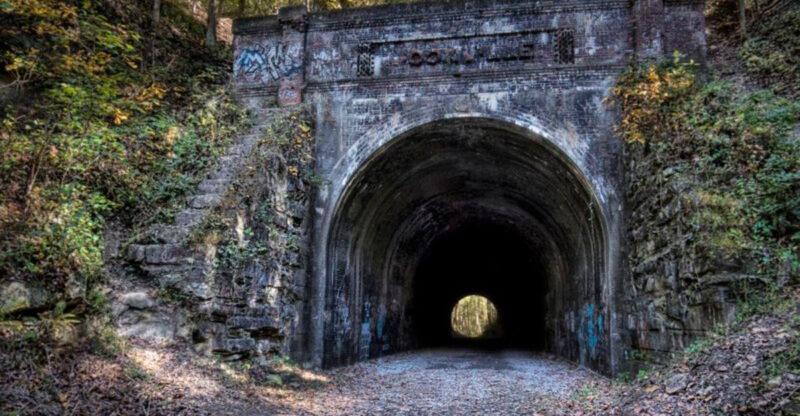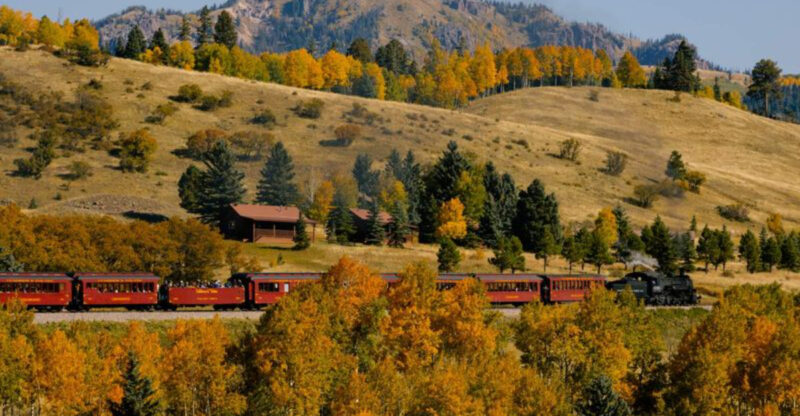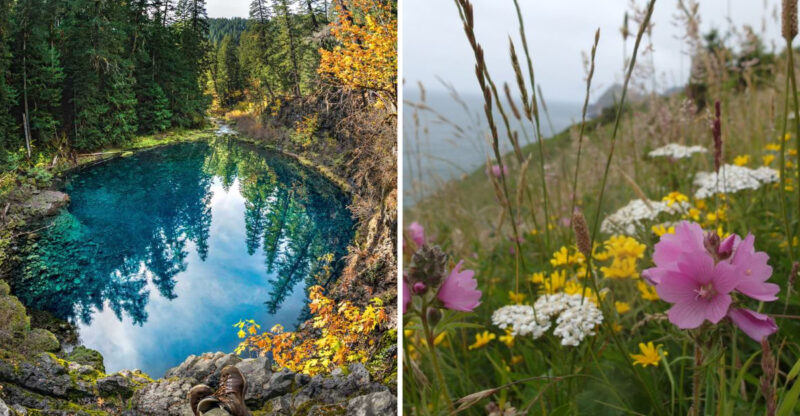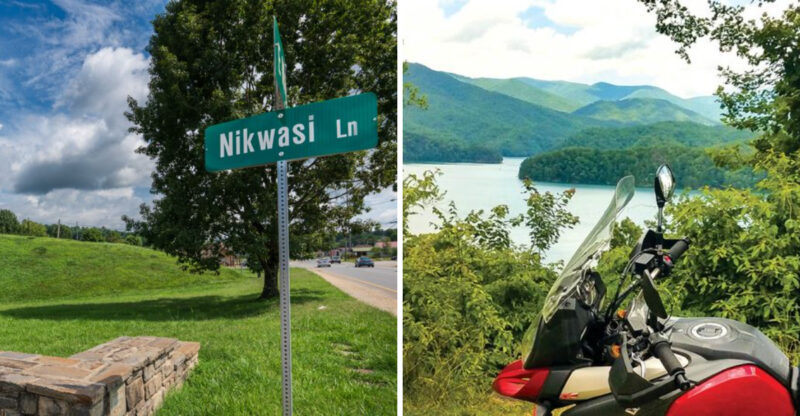Spooky Road Trips Through California’s Deserted Ghost Towns
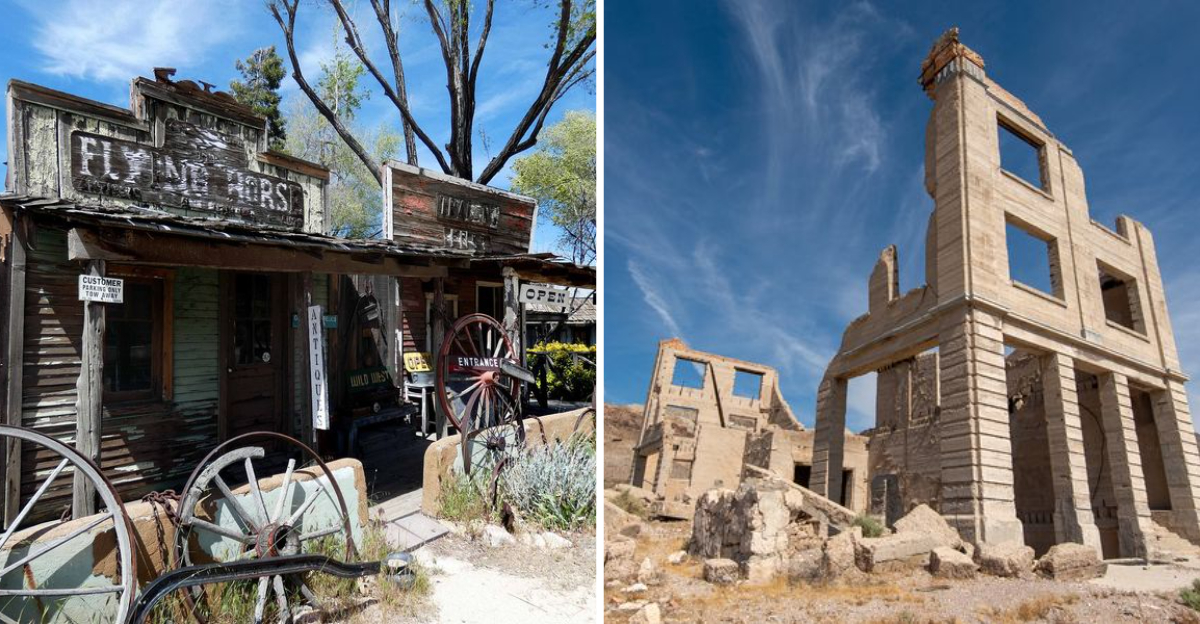
California’s landscape is dotted with forgotten places once-thriving communities that time has left behind.
These ghost towns tell stories of gold rushes, mining booms, and dreams that turned to dust. Pack your camera, fill up your gas tank, and join me on a journey through California’s most haunting abandoned settlements where history whispers through empty buildings and desert winds.
1. Bodie: The Gold Rush Time Capsule
Standing frozen in a state of ‘arrested decay,’ Bodie offers the most authentic ghost town experience in America. Once home to 10,000 gold-seeking residents, this remote outpost now consists of about 200 weathered buildings scattered across the windswept hills of Mono County.
Visitors can peek through dusty windows to see pool tables still set up for games never finished and stores with goods still on shelves. The eerie isolation hits you immediately no restaurants or gift shops here, just raw history.
Did you know? Many visitors report strange phenomena after taking artifacts from Bodie, leading to the famous ‘Bodie Curse’ legend where bad luck follows souvenir hunters.
2. Calico: The Silver Mining Spectacle
Tucked into the colorful hills of San Bernardino County, Calico once flourished as California’s richest silver strike. Walter Knott (of Knott’s Berry Farm fame) lovingly restored this 1880s boomtown, creating a fascinating blend of authentic ruins and reconstructed buildings.
Walking the wooden boardwalks today, I find myself transported back to the Wild West. The old schoolhouse, saloon, and jail still stand as testaments to frontier life, while abandoned mine shafts honeycomb the surrounding hills.
Though partially commercialized with shops and attractions, Calico maintains a genuine spooky vibe, especially if you venture to the original cemetery or visit after the day-trippers have gone.
3. Cerro Gordo: The Isolated Mountain Hideaway
High in the Inyo Mountains overlooking Death Valley sits Cerro Gordo, one of California’s most remote and atmospheric ghost towns. Recently purchased by private owners working on preservation, this former silver mining settlement offers a truly off-grid adventure.
Access requires navigating a steep, rugged road that climbs 8,000 feet above the desert floor. Your reward? An untouched collection of historic structures including the American Hotel (tragically lost to fire in 2020 but being rebuilt), the general store, and the imposing remains of the Union Mine.
If you’re lucky enough to visit (by appointment only), the caretaker might share tales of the town’s violent past Cerro Gordo averaged a murder per week during its heyday!
4. Ballarat: The Death Valley Outlaw Hideout
Named after a famous Australian gold mining town, Ballarat sits at the edge of Death Valley in a landscape so harsh it seems impossible anyone ever lived here. Yet this tiny supply hub once served as a critical lifeline for prospectors in the Panamint Mountains.
Wandering through the few remaining structures, I feel the weight of isolation that defined life here. The weathered general store still stands, alongside scattered cabins slowly returning to the desert. Charles Manson’s truck reportedly sits rusting nearby, a reminder of how outlaws have always been drawn to these forgotten corners.
The caretaker sometimes greets visitors with colorful stories of the town’s wild days, making this dusty outpost come alive with tales of frontier grit.
5. Drawbridge: The Sinking Bay Area Mystery
Unlike California’s desert ghost towns, Drawbridge hides in plain sight amid the wetlands of the San Francisco Bay. This former island community once thrived as a hunting resort and railroad stop before environmental changes and abandonment claimed it in the 1950s.
Now slowly sinking into the marshlands, Drawbridge is technically off-limits to visitors. Dedicated urban explorers can glimpse its tilting structures from the Coast Starlight train or from designated viewing areas with binoculars.
What fascinates me most about Drawbridge is how it represents nature reclaiming human settlements the buildings lean at impossible angles as they sink into the mud, while birds nest in former homes. It’s California’s most unusual ghost town, disappearing a little more each year.
6. Kelso: The Desert Depot Mirage
Rising from the Mojave Desert like a mirage, Kelso Depot stands as a beautifully preserved reminder of when railroads were the lifeblood of the West. This wasn’t a typical boomtown Kelso developed as a crucial railroad station where helper engines were attached to trains climbing the steep Cima Grade.
The Spanish-style depot building has been immaculately restored as a visitor center for Mojave National Preserve. Walking through its rooms transports me to an era when passengers would stop here for meals while crossing the desert.
Though most of the town is gone, the schoolhouse and a few employee cottages remain, creating a poignant scene against the vast desert landscape. The absolute silence surrounding Kelso makes it one of the most atmospheric stops on any ghost town tour.
7. Darwin: The Lingering Mining Holdout
Tucked away in the folds of the Argus Range near Death Valley, Darwin exists in that fascinating limbo between ghost town and living community. At its peak during the silver and lead mining boom of the 1870s, Darwin boasted 3,500 residents with all the trappings of civilization.
Today, fewer than 40 hardy souls remain, living alongside abandoned mines, crumbling company buildings, and a cemetery filled with tales of frontier hardship. What makes Darwin special is this blend of past and present rusted mining equipment sits beside occasionally occupied homes.
The town feels frozen in time, with vintage vehicles parked permanently on streets named for minerals. Darwin’s residents value privacy, so I always view from public roads only, respecting the unique lifestyle of those who choose to live in California’s most authentic semi-ghost town.
8. Panamint City: The Bandit’s Paradise
Deep in the rugged Panamint Mountains lies perhaps California’s most inaccessible ghost town Panamint City. Founded by outlaws hiding from the law, this silver mining camp required such difficult access that materials for its famous 200-foot smelter smokestack had to be hauled in by mules.
Reaching Panamint City today demands a strenuous 7-mile hike up Surprise Canyon. The reward for this effort? Exploring stone ruins, mining artifacts, and even some intact cabins that have survived flash floods and a century of abandonment.
What strikes me most about Panamint City is how its isolation preserved it from vandalism and excessive tourism. The town’s wild character remains intact, from the crumbling saloons where miners once brawled to the hillsides pockmarked with mine entrances.
9. Randsburg: The Living Ghost Town Experience
Nicknamed ‘The Living Ghost Town,’ Randsburg offers a perfect blend of authentic abandonment and quirky preservation. Founded during the 1890s gold rush in the Mojave Desert, this hillside community retains much of its original character, with wooden boardwalks connecting historic buildings.
The famous General Store serves ice cream sodas from an authentic early 1900s fountain a sweet reward after exploring the surrounding hills dotted with mining ruins. Weekends bring antique hunters and motorcycle enthusiasts to the town, creating a fascinating contrast of old and new.
What I love about Randsburg is how it lets you experience a ghost town without the barriers and restrictions of a formal historic site. You can chat with the few remaining residents, many of whom have embraced their role as caretakers of California mining history.
10. Eagle Mountain: The Modern Mining Ghost
Unlike most California ghost towns that date back to the Gold Rush era, Eagle Mountain represents a more modern abandonment. This company town was built in the 1940s to house workers for Kaiser Steel’s iron mine, featuring mid-century architecture, paved streets, and all the amenities of post-war American life.
The mine closed in 1983, and Eagle Mountain’s transformation into a ghost town happened within living memory. Exploring the abandoned high school with its gym and swimming pool creates an eerie post-apocalyptic feeling like walking through a set from ‘The Last of Us.’
Though technically off-limits and patrolled, determined urban explorers still document Eagle Mountain’s decay. The town offers a fascinating glimpse into how quickly our built environment can collapse when its economic purpose vanishes.
11. Allensworth: The Failed Utopian Dream
Founded in 1908 by Colonel Allen Allensworth, this town represents a unique chapter in California’s ghost town story the first community established and governed entirely by African Americans. The Colonel envisioned a place where Black citizens could live free from discrimination and control their own destiny.
Initially thriving with a school, library, and church, Allensworth faced devastating setbacks when the railroad changed its routes and severe drought hit. By the 1940s, most residents had left, dreams unfulfilled.
Today, Allensworth State Historic Park preserves several restored buildings. Walking these quiet streets, I’m always moved by the powerful story of determination against overwhelming odds. The site offers a profound counterpoint to typical mining ghost towns, showing how California’s abandoned places tell diverse stories of American ambition.
12. Masonic: The Hidden High Country Secret
Perched at 8,300 feet in the remote eastern Sierra, Masonic ranks among California’s least-visited and most authentic ghost towns. Three separate mining camps once formed this community, where gold was discovered in 1860 but not seriously mined until the early 1900s.
The journey here requires navigating rough dirt roads that keep casual tourists away. Your reward? Weathered wooden structures, rusting machinery, and mine entrances scattered across a stunning alpine landscape with views stretching into Nevada.
I’m always struck by how nature is slowly reclaiming Masonic pine trees grow through former home sites while wildflowers carpet what were once busy streets. The high elevation preservation means many wooden buildings remain remarkably intact, creating a photographer’s paradise of authentic frontier architecture against mountain backdrops.
13. Silver City: The Ghost Town Resort
Hidden in Bodfish near Lake Isabella, Silver City isn’t a natural ghost town but rather a fascinating collection of rescued historic buildings assembled into an open-air museum. When development threatened authentic structures throughout Kern County, they were painstakingly relocated here, creating a preserved village.
Walking through Silver City feels like stepping into a movie set, with each building telling its own story. The saloon, jail, and general store contain original artifacts that bring frontier life into focus.
What makes this place special is how it saves fragments of history that would otherwise be lost. Though technically a recreation, Silver City offers authentic buildings arranged in a visitor-friendly setting perfect for those who want the ghost town experience without the difficult access of more remote sites.
14. Rhyolite: The Banker’s Dream Gone Bust
Straddling the California-Nevada border near Death Valley, Rhyolite represents one of the most dramatic boom-to-bust stories in mining history. Founded in 1904, this ambitious town exploded with growth, boasting electric lights, water mains, hotels, stores, and even an opera house.
What makes Rhyolite fascinating is how quickly it all fell apart. By 1920, the population had plummeted from 5,000 to nearly zero after the richest ore was exhausted. Today, I’m always struck by the haunting ruins of the three-story bank building and railway depot.
The surreal Goldwell Open Air Museum nearby adds another dimension to your visit, with its ghostly sculptures creating an otherworldly atmosphere against the desert backdrop.


